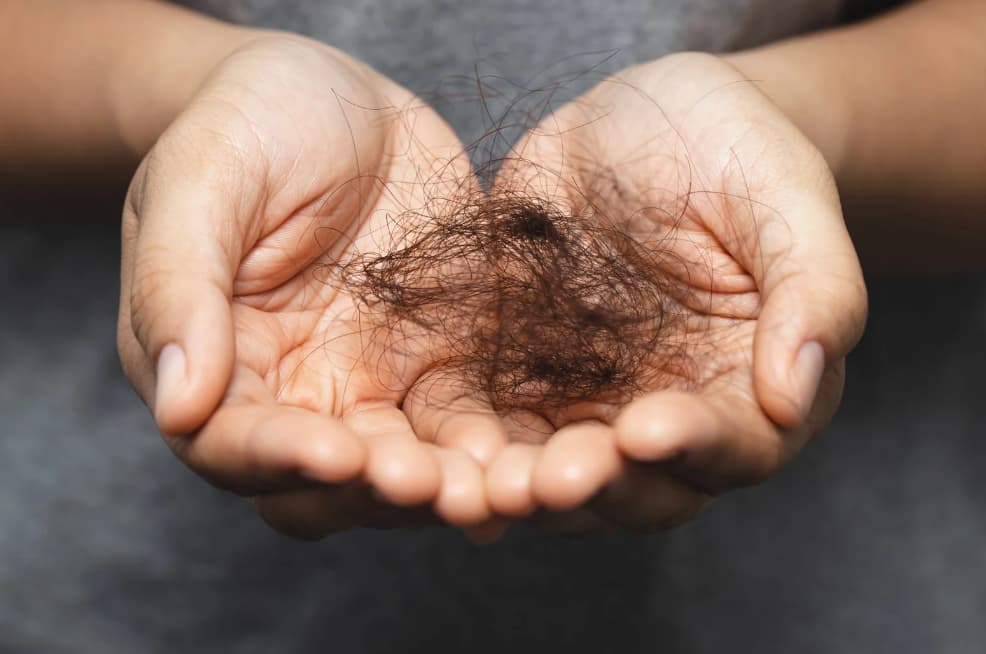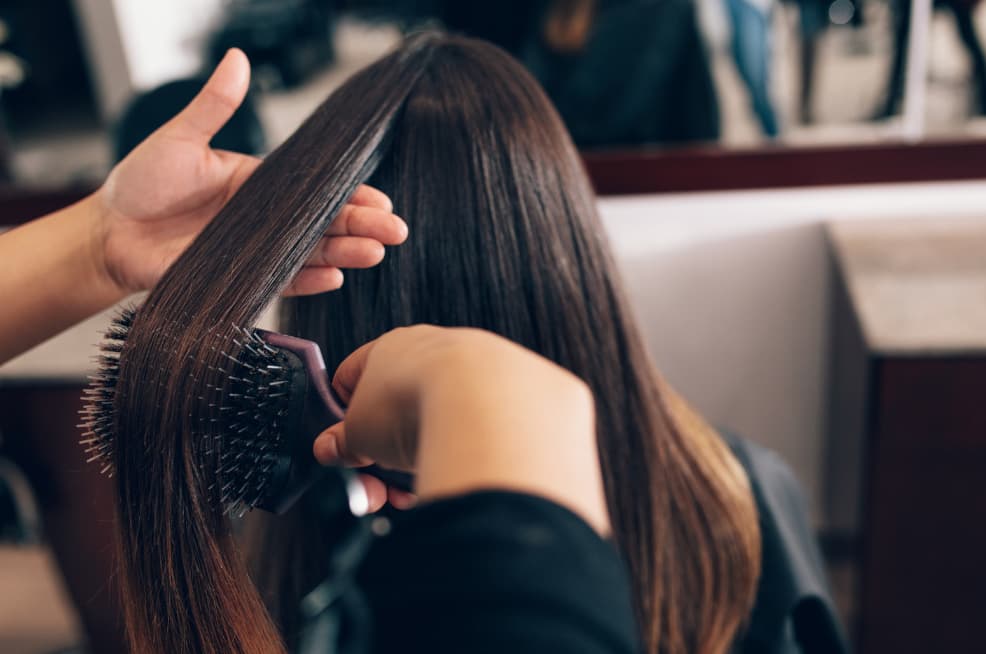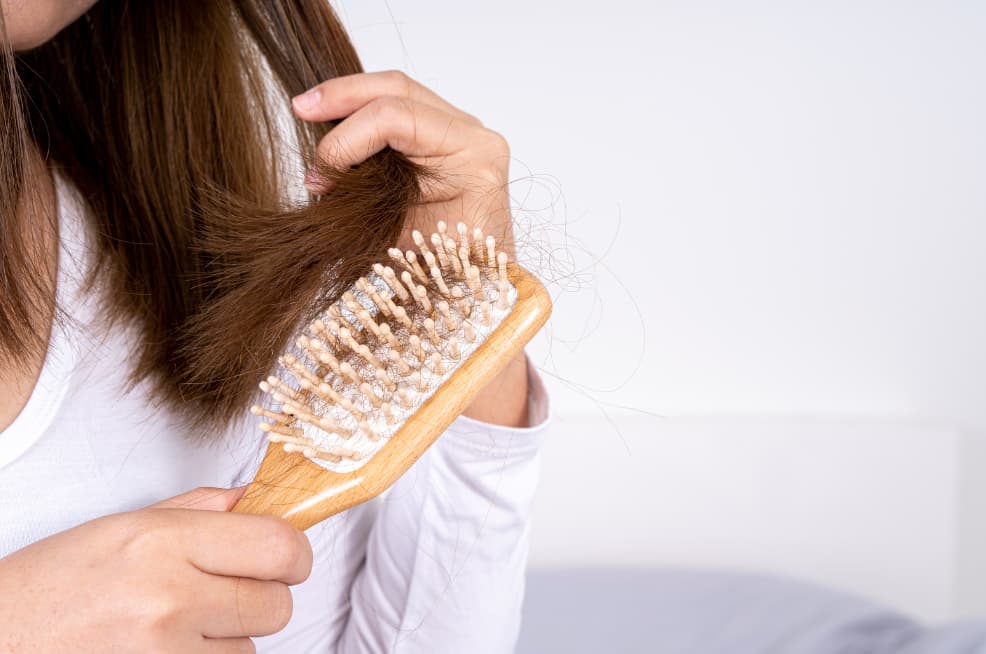If you’re experiencing noticeable hair loss, which is more than usual, your first instinct should be to visit your dermatologist. That’s because, according to Alopecia UK, there are 9 types of alopecia. If you try self-diagnosis, there’s a high chance that you won’t come to accurate conclusions.
At the clinic, your doctor will do a physical examination of the scalp, and s/he might follow up with a few tests, one of which is a hair pull test. This will help your doctor determine the cause of hair loss, so s/he can prepare a treatment plan for you.
Keep in mind that a hair pull test won’t be the first thing that your doctor will do as soon as you arrive at the clinic. You’ll be asked a few questions that will have to do with the kind of hairstyles you wear, family history, dietary habits, medical history (any active treatments that you’re on), and various stressors that you’re experiencing.
About the pull test itself, there are a lot of things that people don’t know about, and some even wonder if they can use it at home to find out if they have a problem. Here, you’ll find out everything that you need to know about the hair pull test.
What Is A Hair Pull Test?
It’s a clinical test that’s based on the idea of pulling out the hair that’s in the telogen phase of the growth cycle.
Normally, 90% of the hair is in the growing (anagen) phase, with only 6-8% of them being in the telogen phase. So, all in all, you shouldn’t lose more than 50-100 hair strands in a day. But when the normal hair growth is disrupted, you’d have abnormal shedding. A hair-pull test is used to detect that and the following types of hair loss:
- Telogen effluvium – diffuse hair loss which occurs a few months following a stressful event, like hormonal imbalance, pregnancy, physical injury, illness, etc.
- Anagen effluvium – sudden loss of hair due to chemotherapy while it is still in the anagen phase.
- Loose anagen syndrome – loss of hair in the anagen phase because it’s not anchored to the follicle. It usually affects children.
- Alopecia areata – loss of hair due to immune disorder.
- Genetic hair loss – loss of hair due to female or male pattern baldness, also known as androgenetic alopecia.

It is a helpful diagnosis of more severe alopecias. Most of the people who do seek medical help and get this test are usually already experiencing acute hair loss.
How Is The Pull Test Performed?
The dermatologist will take out 4 bundles of hair from four regions of the scalp:
- Crown/vertex (the highest point on the scalp)
- Parietal areas (on each side of the head, above the ears to the back)
- Occipital area (back of the head)

In each section, there are about 40-60 strands of hair. To perform the hair pull test itself, the doctor will follow the steps below:
- Gather a section close to the root and hold it in the thumb, index and middle finger.
- Gently pull the hair down the whole length. The tugging isn’t forceful.
- Hair pulled out from each section is counted. The tip of the hair is checked to see if it was broken away from the root (this kind of hair is discarded from the test) or plucked from the root.
During the test, your scalp will be pulled slightly, which can cause some discomfort. However, you won’t feel any pain.
Interpreting The Results Of A Hair Pull Test
So, from each bundle (of the four), the hair loss should be less than 10%. Since 40-60 strands of hair are gathered all together, the shedding of 4-6 hair strands is considered normal. This is known as a negative hair pull test.
However, if you lose more than 10% of the hair from one bundle, you have what’s called active hair loss. This is a positive hair pull test. Here, the doctor has to consider another thing: Is the hair loss more than 10% in all the bundles or just some of them?

If you get a positive result in more than 1 bundle, you may have telogen or anagen effluvium hair loss. However, if the hair loss is concentrated in the area around one bundle, it may be the result of alopecia areata or androgenetic alopecia.
Keep in mind that males usually have a defined donor area on the back and sides of their heads, where the hair is resistant to the effects of the DHT hormone (responsible for hair loss). However, in females, hair loss from androgenetic alopecia can be diffuse, so they may not have a stable donor area.
Because of androgenetic alopecia, positive pull tests in males and females may give different results. Males may lose hair in some of the bundles, while females may lose hair in all of the bundles.
How To Prepare for A Hair Pull Test?
Often, you’ll hear that you need to stop shampooing and brushing your hair 1-5 days before the test, but that may not be necessary unless your doctor advises you to.
One study published in the Journal of the American Academy of Dermatology in 2017 evaluated the difference that brushing or washing of the hair would make on the hair-pull test. It found that it made no difference. The number of hairs removed was the same whether the participant washed or brushed their hair on the day of the test or 1-2 days before it.
Is the Hair Pull Test Accurate?
Although commonly used, the hair pull test is in no way the only test that’s performed to diagnose a hair loss problem. That’s because there are issues with its accuracy.
To begin with, this test has no standard guidelines. Depending on the doctor, the interpretation of the results and even the way the test is performed can vary.
About the sections of hair, each and every strand is not counted to 40-60. It’s an estimate only, so there are irregularities there. It can even lead to misdiagnosis if the doctor is relying on this test alone.
The other problem with the hair pull test is the force itself. There’s no “set” force that should be applied to each bundle. The only criterion is that it should be “gentle enough to only pull out telogen hair,” which is very vague.
The distribution of the force is another issue. It doesn’t spread equally across all the strands, so some experience more tugging than others. This again affects the accuracy of the results.

Lastly, the hair pull test doesn’t take into account the type of hair a person has. One study published in the Journal of the American Academy of Dermatology in 2021 showed that Afro-texture hair is more prone to breakage than Asian-textured hair. That’s because the latter has more tensile strength.
To understand the actual cause of hair loss, doctors take the hair collected during the hair-pull test and put it under the microscope to better study it.
Can You Perform The Hair Pull Test At Home?
While you certainly can perform the hair pull test at home, there are a lot of problems that you’re going to run into. First, unless you count, you wouldn’t know how thick a bundle of 40-60 hair is. You can, of course, try looking up images of it online, but it’s unlikely to help.
Proper execution of the technique is another issue, and you might end up with incorrect results. The other problem is that if you’re thinking of performing the hair pull test at home, you’ll be more inclined to self-diagnose the cause of hair, which is not a good idea, especially if the shedding is quite excessive.
After diagnosing yourself, you might also use the internet to look for a treatment on your own. Again, misdiagnosis can worsen the problem, which is why you need to get professional help.
What Are Some Other Hair Tests?
A hair pull test isn’t the only one that’s performed to check the health of the hair. There are some other tests like:
- Wash test – the patient is not allowed to wash their hair for 5 days. Afterwards, their hair is washed in a basin, the drain hole of which is covered with a mesh to collect the broken hair. These are counted and divided by their length (shorter separated from those longer than 3 cm).
The shorter hair is an indication of pattern baldness. This test is performed when the person has both pattern baldness and telogen effluvium to find out which one is more severe. If the number of short hair is more than long hair, pattern baldness is more severe.
- Tug test – a hair bundle is held at the root and at the end and tugged. This is done to find out how strong the shaft of the hair is.
- Card test – the doctor parts the hair and places a small, felt card (in a different colour from the hair for better visibility) against the scalp to examine the very short, broken hair strands.
Your doctor will supplement these tests with blood tests, scalp cultures (for infection) and/or biopsy.
Concluding Remarks
Performing a hair pull test at home is convenient and easy, which is why so many people want to do it. It can help indicate certain types of alopecia.
But remember, it’s best to get it done by a doctor as s/he will most likely perform a physical examination and other tests with it for a more accurate diagnosis. A pull test alone cannot provide that, which is why doing it at home will not give you the right answers.
Reviewed and Approved by Trichologist Yaprak Yazan


